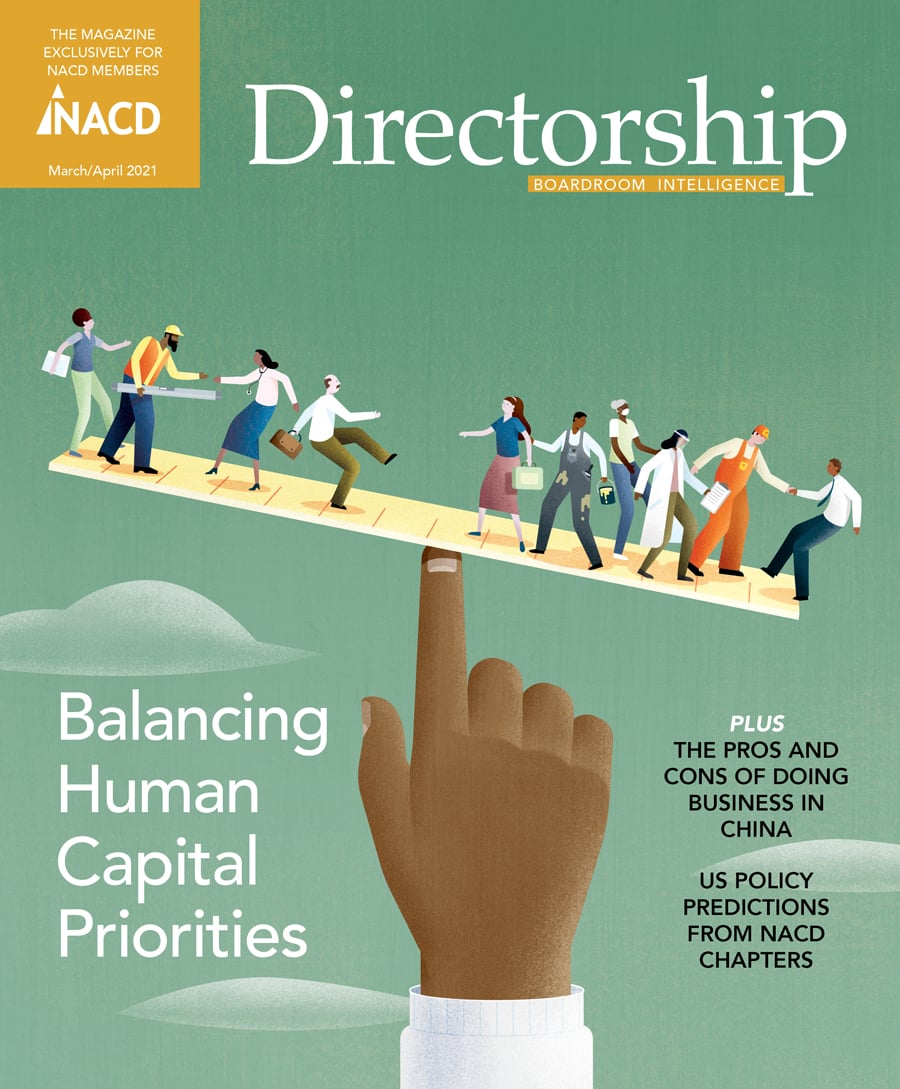
Online Exclusive
How to Reduce Family Business Generational Transition Failure
There are four key items independent directors should prioritize to support durable, multigenerational family enterprises.
Directorship® Magazine
The Magazine for Boardrooms, Delivering Insights & Leadership Excellence

Governance Surveys
Directorship Magazine
Editor in Chief
Anita Narayan
Advertising Inquiries
Greg Griffith
Directorship® magazine is a digital quarterly publication exclusively for NACD members, featuring original articles, news, and expert commentary from our editorial staff and guest contributors on leadership, business governance, technology, and more.

New
Topics include the 2025 NACD Directorship 100 honorees and recent developments in Texas as companies consider reincorporation, as well as Warren Buffett’s governance wisdom.
Online Exclusives from Directorship®
The most up-to-date and noteworthy articles including our former BoardTalk blog.


Uncover how boards can ease transition planning by enabling CEO success from the outset. Plus, consider how AI may enhance board operations and learn how to adjust oversight of supply chains in an uncertain environment.

Discover essential director traits and governance practices to build the right board in an evolving environment. Plus, plan for the future of work and consider the personal challenges leaders face when moving on from executive careers.

Topics include the evolving strategies of shareholder activists, insight into the new US presidential administration, and how to address burnout in the boardroom.

In this issue: Meet the 2024 NACD Directorship 100TM honorees and learn about their roles in shaping the success of the companies they serve. Plus, discover the key considerations for changing auditors.


From the archives of Directorship magazine, member can access full issues through 2021.

The 2021 NACD Directorship 100

Digital Agility

Time Runs Out on Climate Challenge

Pre-IPO Boards Under Construction

Balancing Human Captial Priorities

The Yin and Yang, Profit and Purpose